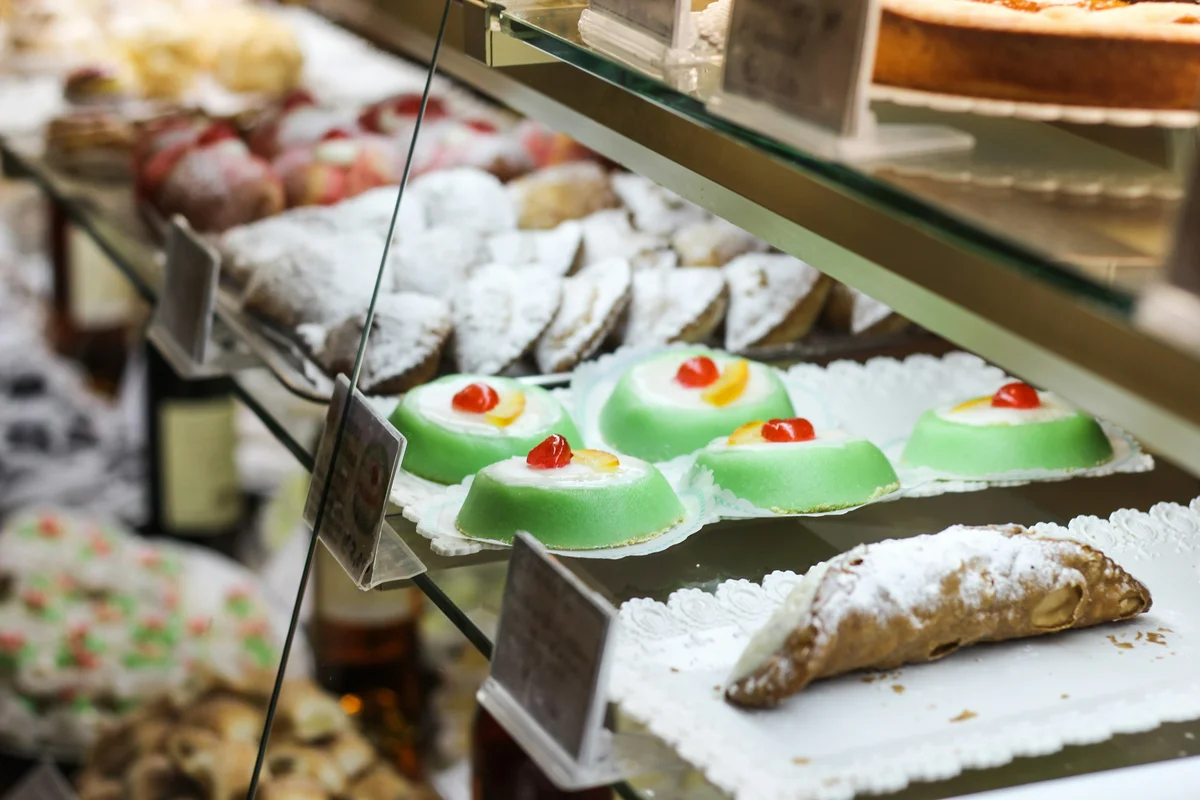A Land of Secrets, Sugar, and Sun
Sicily is a land of layers - volcanic, historical, cultural, emotional - and nowhere are these layers more deliciously revealed than in its pastries. To travel across the island is to discover that Sicilian sweets are far more than confections. They are edible chronicles, stories sculpted in sugar and ricotta, testimonies of the civilisations that have swept across this sun-drenched land.
Greeks, Romans, Arabs, Normans, Spaniards: each left behind ingredients, skills, and flavours that Sicilians absorbed, transformed, and stitched into a pastry tradition now recognised worldwide for its artistry and identity. These are desserts that can be told as well as tasted.
The Queen of Sicilian Pastry: Cassata
If there is a sovereign in this kingdom of sweetness, it is the cassata. Encountered for the first time, it appears almost theatrical - a confection of colour, geometry, and lavish decoration. Yet its roots reach back to ancient Rome. The name, as scholars now argue, derives not from the Arabic qas’at, but from the Latin caseatus, hinting at its origins as a cheese-based preparation baked in a simple bread casing.
Through centuries, the cassata travelled, transformed, and blossomed. Monastic kitchens refined it, layering skills learned in cloisters with the flavours of ruling cultures. The Spanish influence added sponge cake; the Arab legacy brought almond paste; Baroque Sicily contributed the extravagant decoration piped with cornetto - swirling patterns reminiscent of the architecture of Modica and Noto.
To cut through a slice today is to witness history in cross-section: ricotta cream whispering of pastoral traditions, candied fruit glinting like jewels, green almond paste echoing the pistachio groves that climb the lava slopes of Mount Etna.
Ingredients Woven Into the Landscape
Sicilian pastry is, above all, a love letter to local ingredients. Ricotta from hilltop dairies. Almonds that rustle silver-green on summer nights. Pistachios gathered by hand on volcanic rock in Bronte or on the gentler soils of Agrigento. To watch a pistachio harvest is to witness a ritual: men and women climbing the dark, jagged stones of ancient lava flows, collecting emerald kernels destined to colour marzipan and enrich creams.
No true traditional dessert can be made without these treasures. Sicilian pastry chefs insist, rightly, that to use ingredients from elsewhere is to make something sweet - but not Sicilian.
The Golden Thread of Honey
Among the island’s many gifts, honey holds a special place. Sicily’s extraordinary biodiversity gives rise to countless floral varieties, each captured by bees in amber liquid. This honey softens ricotta, sweetens creams, and lends a natural perfume to pastries. In the right hands, it becomes a bridge between the wild countryside and the refined, baroque indulgence of the island’s dessert tradition.
The King: The Cannolo
If cassata is the queen, the cannolo is surely her king. A simple architecture - one crisp shell, one silken filling - yet capable of delivering an explosion of texture and flavour. The crunch gives way to cream, the ricotta dances with citrus or honey, and for a moment, the entire island seems to gather on the palate.
Every province has its interpretation. Piana degli Albanesi offers enormous, regal cannoli brimming with velvety ricotta. Dattilo’s version is delicate and fragrant. In eastern Sicily, sweets such as the “Minni di Sant’Agata” echo local devotion and lore. Each variation is a reminder that pastry in Sicily is inseparable from place.
The Story Behind Each Sweet
Sicilian pastries endure because they are not static. They evolved through centuries - refined in convents, reinvented in noble kitchens, preserved by families who treated recipes as heirlooms. What remains constant is the insistence on quality and authenticity. A dessert is not merely assembled; it is composed with reverence for the land itself.
To understand why, one need only visit the old dairies where ricotta is still made at dawn, or speak with farmers who cultivate citrus in soils kissed by sea breeze. To them, these ingredients are not commodities; they are pieces of culture.
A Sweet Responsibility
As Sicilian pastry travels the world, chefs and artisans carry a responsibility that goes beyond technique. They are ambassadors - not only of flavour, but of territory, of memory, of identity. Every cassata, every cannolo, every almond-scented sweet speaks of a people who have endured waves of conquest yet preserved the soul of their cuisine.
And the responsibility extends to all Sicilians: to protect the landscape, to value craftsmanship, to share these stories confidently with the world. Sicily’s pastries are masterpieces not because of opulence, but because they express a profound bond between land and people.
A Taste of the Island’s Heart
In the end, to eat a Sicilian dessert is to taste more than sugar and cream. It is to encounter history, devotion, sunlight, labour, and love. It is to feel the pulse of a culture that has survived and thrived by transforming every influence into something unmistakably its own.
Sicily is a land of sweetness - not only in its pastries, but in its people, its landscapes, and its unyielding pride. And it is a sweetness that deserves to be celebrated, shared, and cherished in every corner of the world.

